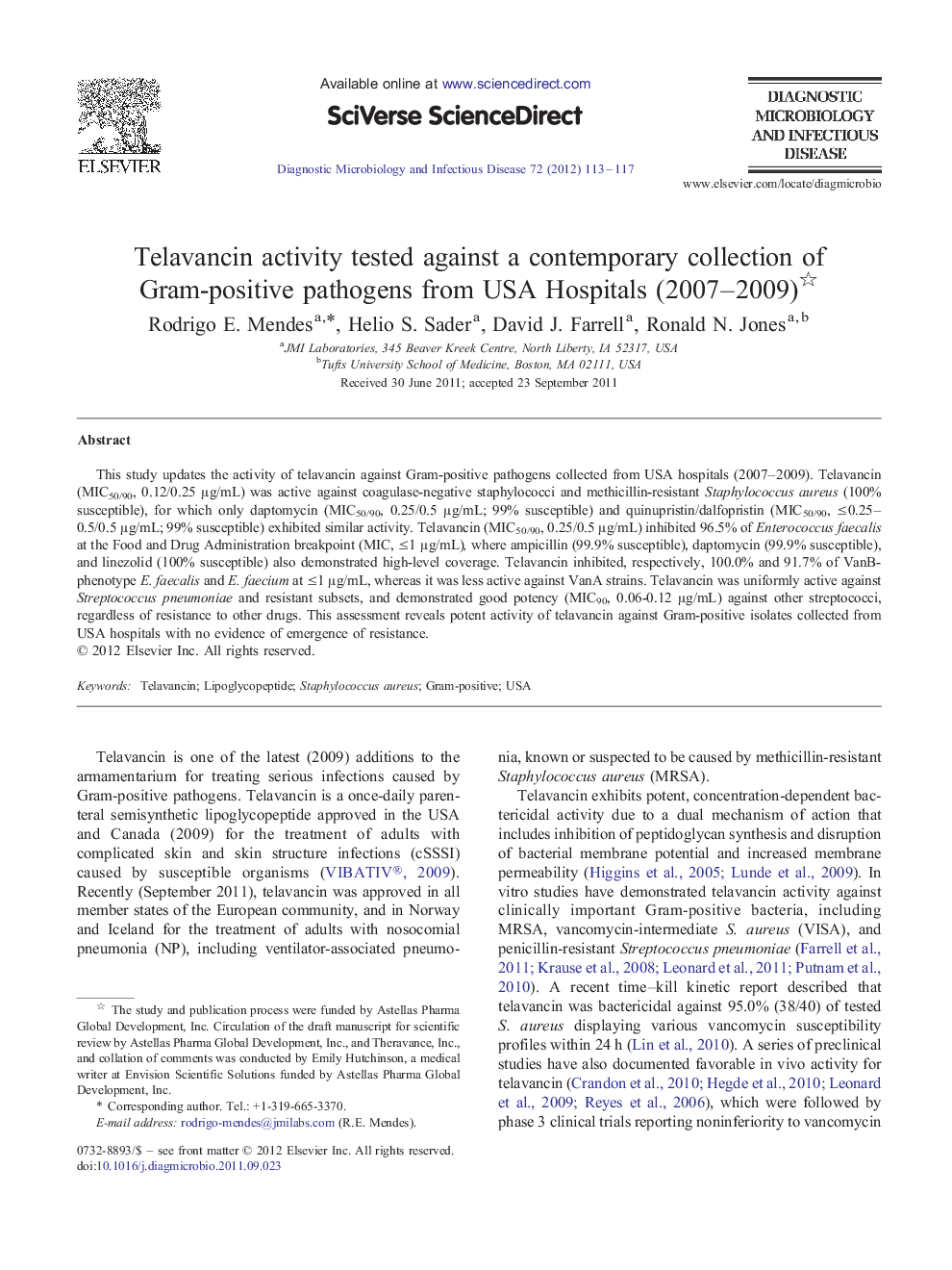| Article ID | Journal | Published Year | Pages | File Type |
|---|---|---|---|---|
| 6116500 | Diagnostic Microbiology and Infectious Disease | 2012 | 5 Pages |
Abstract
This study updates the activity of telavancin against Gram-positive pathogens collected from USA hospitals (2007-2009). Telavancin (MIC50/90, 0.12/0.25 μg/mL) was active against coagulase-negative staphylococci and methicillin-resistant Staphylococcus aureus (100% susceptible), for which only daptomycin (MIC50/90, 0.25/0.5 μg/mL; 99% susceptible) and quinupristin/dalfopristin (MIC50/90, â¤0.25-0.5/0.5 μg/mL; 99% susceptible) exhibited similar activity. Telavancin (MIC50/90, 0.25/0.5 μg/mL) inhibited 96.5% of Enterococcus faecalis at the Food and Drug Administration breakpoint (MIC, â¤1 μg/mL), where ampicillin (99.9% susceptible), daptomycin (99.9% susceptible), and linezolid (100% susceptible) also demonstrated high-level coverage. Telavancin inhibited, respectively, 100.0% and 91.7% of VanB-phenotype E. faecalis and E. faecium at â¤1 μg/mL, whereas it was less active against VanA strains. Telavancin was uniformly active against Streptococcus pneumoniae and resistant subsets, and demonstrated good potency (MIC90, 0.06-0.12 μg/mL) against other streptococci, regardless of resistance to other drugs. This assessment reveals potent activity of telavancin against Gram-positive isolates collected from USA hospitals with no evidence of emergence of resistance.
Related Topics
Life Sciences
Immunology and Microbiology
Applied Microbiology and Biotechnology
Authors
Rodrigo E. Mendes, Helio S. Sader, David J. Farrell, Ronald N. Jones,
